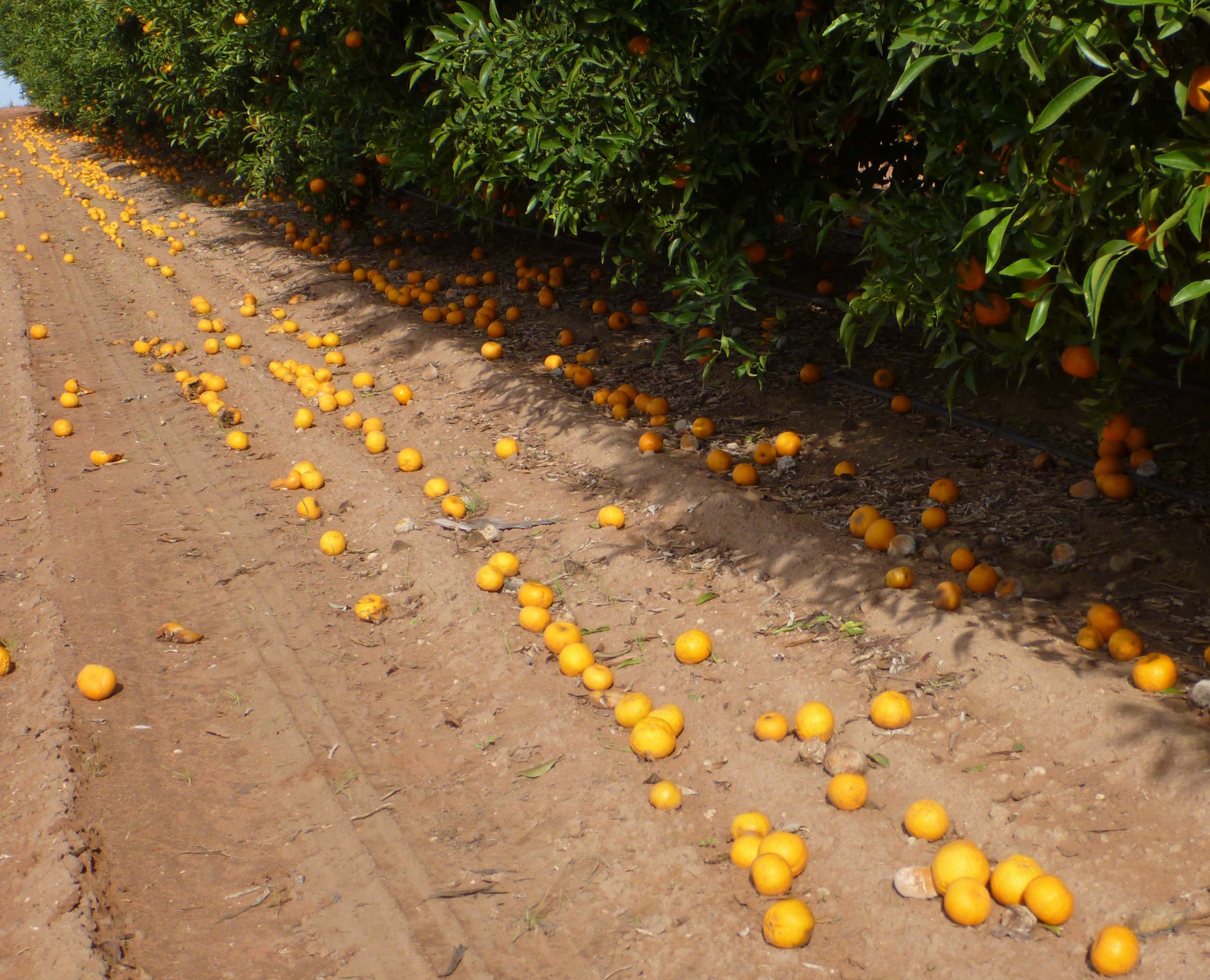22 February 2022
Integrated Disease Management of black core rot in citrus
Integrated Disease Management of black core rot in citrus
22/02/2022
What is the problem?
Consumers are caught by surprise when they tuck into a healthy piece of fruit but discover a black rotten mess inside (See fig 1). A new Hort Innovation project aims to shed some light on how this happens in the field so that we can learn how to better manage it.
Black core rot caused by the fungus Alternaria spp. can be a problem for some citrus growers in the southern growing areas in Australia with winter rainfall and cool winter temperatures, contrasting with hot dry summers. Fruit infected with Alternaria spp. can develop black core rot inside the fruit without showing any external symptoms (See Fig 1).
Spores of Alternaria are airborne and they are believed to enter citrus fruit through wounds or micro-cracks at the stylar end during early fruit development after petal fall. After infection of young fruit, the fungus establishes a dormant infection in the stylar end of the fruit. Especially in citrus varieties with poorly formed navels, the fungus will start growing and enter the fruit from this initial infection point after the button senesces.
The problem may not be detected until after harvest when the fruit reaches the consumer or the juicing plant. Besides the internal black rot, the fruit also develops a bitter flavour. In addition to turning the inside of the fruit black the disease can also give rise to early fruit drop resulting in yield loss (see Fig 2).

Figure 1: Black core rot in mandarin.
What is the problem and impact from a grower’s perspective?
Application of fungicides is at present not giving consistent control and one way for growers to reduce the impact of the disease is to delay harvesting until most of the infected fruit have dropped.
Project leader Professor Andre Drenth explains:
“Growers have to make a decision to apply fungicides before knowing that they will have the problem.
“If the decision is made to take a pro-active approach based on black core rot problems experienced in previous years in certain blocks, there is no solid base on which decisions concerning choice of product, timing and frequency of application can be made.
“The return on investment will only become evident after harvest and even then, the effectiveness of applied management strategies is hard to determine.”
What would help growers better control this disease?
The risk of losses due to black core rot would be reduced by knowing which environmental conditions and crop stage have the highest risk of infection for certain varieties and information on which products to apply and the timing of application.
What is this project investigating?
This project will start with a survey and interviews with growers and industry stakeholders to get a better handle on the occurrence and impact of black core rot in citrus and capture the effectiveness and limitations of current practices that are used and favoured among citrus growers for managing citrus black core rot.
Field trials will be undertaken to better understand the disease by identifying the sources of inoculum, the timing of infection and the differences experienced among different citrus varieties. The Alternaria species causing the problem will be further investigated in collaboration with the Alternaria Brown Spot project recently started in Queensland. When, where and how the pathogen causes disease will be examined to determine the epidemiology and disease cycle of the pathogen.
“Based on an improved understanding of the basic biology of the disease the research team will test various disease management options which are compatible with the existing control programs. The ultimate aim is to reduce the impact of black core rot in citrus.” said Andre.
“Based on these experiments we hope to explore choices and timings of chemical and other control options for citrus black core rot that can be integrated into an IPDM program and that can be further considered by Hort Innovation and the industry.”
Most of the field and laboratory work will be conducted by a post graduate student under supervision of experienced pathologists to increase the future research capability for the Australian citrus industry.
The project will enhance our understanding of citrus black core rot and establish the effectiveness and/or limitations of current grower practices. An increased understanding of the disease cycle and underlying epidemiological factors are critical to develop and field test novel control options for inclusion in the existing IPDM program. Training of a post-graduate student through the project will expand citrus pathology capability in Australia.
How will growers benefit from this project?
By determining the identity, source of inoculum, infection pathway and introduction of control methods for black core rot, the project will contribute to improved fruit quality and reduced post-harvest losses. Field trials will be conducted with growers in their orchards to improve networks and cross-industry collaborations and drive widespread adoption of on-farm use of R&D outputs. Relevant research will enable proactive strategic and evidence-based decision-making for citrus growers.
Who is involved?
This project is a collaboration between the University of Queensland (UQ) and NSW DPI. Prof André Drenth from UQ, who has over 30 years of experience in various diseases on horticultural crops will lead the project with the support of Dr Nga Tran who has worked on citrus black spot in Queensland. From NSW DPI the research team consists of the citrus pathologist, Dr Nerida Donovan, and citrus development officers Andrew Creek and Steven Falivene.

Figure 2: Fallen fruit with Black core rot.
Membership
You are not logged in
If you are not already a member, please show your support and join Citrus Australia today. Collectively we can make big things happen.
